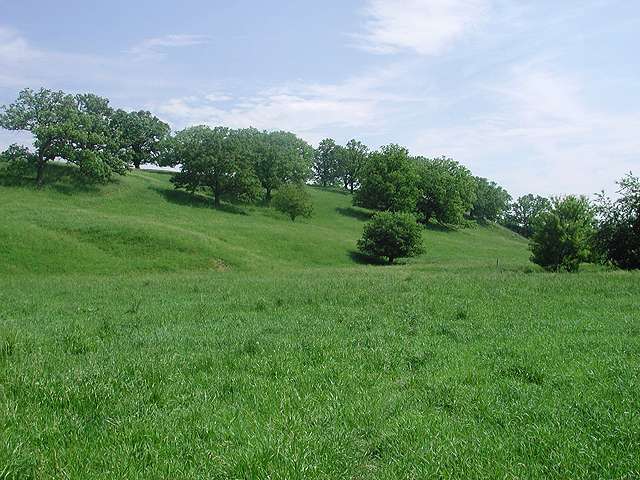A new forage comes to the Midwest, courtesy of nature

A forgotten forage grass imported from Europe in the 1800s could soon be helping to boost cattle and dairy production. The grass, which has adapted well to parts of the Upper Midwest, has been released by Agricultural Research Service scientists in Madison, Wisconsin.
The forage grass was discovered on a farmer's shaded hilltop in a long-time pasture that had never been seeded with commercial forages. Cattle thrived on it and it gradually spread from the hilltop grove into gullies and open areas, possibly because cattle eating the ripe seed spread it in their manure. The farmer fed hay made from it to more cattle, to spread it further. He also eventually began consulting with ARS plant geneticist Michael Casler and his colleagues at the U.S. Dairy Forage Research Center.
Casler and his colleagues have since spent more than a decade evaluating the grass, named Hidden Valley for the farm where it was discovered. In field trials and other tests, they evaluated how cattle respond to it and how well it grows in a variety of locations. They found that it produces a 9-percent lower yield than orchardgrass and tall fescue, but has a 9-percent higher rate of neutral detergent fiber digestibility. That means cattle digest it more easily and eat more of it, in turn gaining more weight and producing more milk. Research also shows that it has adapted to the Upper Mississippi River Basin by developing several desirable traits. It is drought tolerant and will survive freezing temperatures and repeated grazing.
DNA tests show it to be a meadow fescue brought to the United States by European settlers in the 1800s. By the 1950s, meadow fescues had largely been replaced with higher yielding tall fescues and other grasses. But they never completely disappeared as forages. A movement toward managed grazing operations in the 1980s prompted renewed interest in them, and ARS researchers and colleagues at the University of Wisconsin evaluated 91 varieties in extensive field trials, including seven European varieties, on three Wisconsin dairy farms. But Hidden Valley stands out, according to Casler. "What was originally found on this farm is really remarkable," he says.
Like other meadow fescues, it has an endophyte (symbiotic fungus) that gives it some degree of environmental protection. But it does not produce the compounds found in tall fescue that can sometimes harm cattle. Surveys of the Upper Midwest "Driftless Region," which includes parts of Illinois, Iowa, and Minnesota, also show that it can be found in a wide range of habitats and seems to grow well on land taken out of crop production and allowed to revert to pasture.
Casler released Hidden Valley in June 2014, publishing an announcement in the Journal of Plant Registrations, and seed is available through the National Plant Germplasm System.
Provided by Agricultural Research Service

















